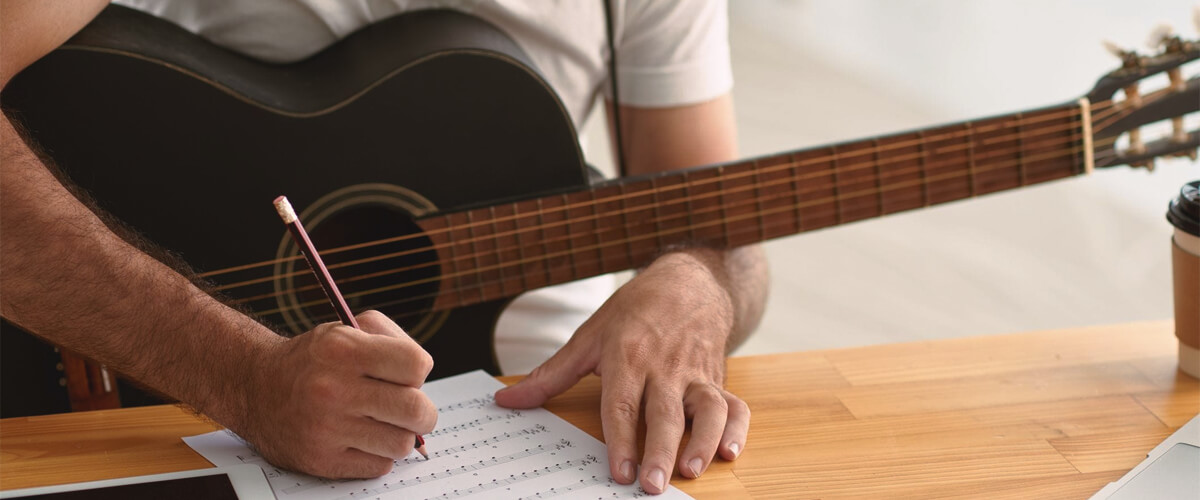Starting a song is a creative endeavor that holds immense importance and complexity. It sets the tone, captures the attention, and lays the foundation for the entire musical composition. Whether you’re a seasoned songwriter or just starting out, understanding how to start a song is important for crafting a captivating piece. This article will explore various techniques, strategies, and considerations to help you embark on your musical journey. From finding inspiration to developing melodies and lyrics, we will delve into the art of songwriting and uncover valuable insights on how to effectively begin a song.
Finding your muse: deciding what to write a song about
When it comes to songwriting, one of the first challenges is deciding what to write a song about. The theme or topic of your music track sets the stage for the emotions, stories, and messages you want to convey. It gives your song direction and purpose. But how do you find inspiration for your song’s subject matter?
Here are some tips and strategies to help you generate song ideas:
- Reflect on significant moments, relationships, or emotions that have impacted you. Your personal experiences can provide a rich source of material for your songwriting.
- You may find inspiration in everyday encounters or the unique stories of others. Look for moments that evoke strong emotions or capture your curiosity.
- Engage with different forms of art to spark your imagination. Read books, watch movies, visit galleries, or listen to other musicians’ work. These mediums can inspire new ideas or provide interesting perspectives for your songwriting.
- Stay informed about the world around you. Social issues, cultural movements, or significant events can be a powerful source of inspiration for creating impactful songs that reflect the times we live in.
Remember, the key is to find a topic that resonates with you and offers a unique perspective. By tapping into your creativity and exploring various sources of inspiration, you can discover compelling ideas to write a musical piece about.
Examples of popular song themes include heartbreak and relationships (e.g., Adele’s “Someone Like You”), self-empowerment (e.g., Katy Perry’s “Roar”), social issues (e.g., Marvin Gaye’s “What’s Going On”), or personal growth (e.g., Taylor Swift’s “Shake It Off”). Ultimately, the choice of your song’s theme is yours, and it should reflect the individuality and artistic vision of a songwriter.
The art of songwriting: how to write a song

Writing a musical piece is a creative journey that involves weaving together various elements to create a harmonious and compelling musical piece. If you’re wondering how to start writing a song, understanding the songwriting process and its key components is essential. In this section, I will provide you with insights on how to craft a memorable song.
- Structure:
- Start by sketching out a basic song structure on paper, such as Verse-Chorus-Verse-Chorus-Bridge-Chorus.
- Experiment with structure variations to add interest, such as a pre-chorus before the chorus or a breakdown section.
- Use repetition strategically to reinforce key elements and create familiarity for the listener.
- Consider the dynamics of the musical piece by incorporating changes in intensity, instrumentation, or vocal delivery between sections.
- Lyrics:
- Begin by freewriting or brainstorming ideas related to your chosen theme. Write down any words, phrases, or emotions that come to mind.
- Focus on creating vivid imagery and sensory details to paint a picture in the listener’s mind.
- Use metaphors, similes, and other figurative language to add depth and evoke emotions.
- Experiment with different rhyme schemes (such as AABB, ABAB, or ABCB) to find a structure that suits your music track.
- Pay attention to the rhythm of your lyrics and how they fit with the melody. Consider emphasizing certain words or syllables for added impact.
- Melody:
- Sing or hum different melodies over chord progressions to find a catchy tune.
- Experiment with variations in pitch, rhythm, and phrasing to create memorable hooks.
- Consider the range of your voice or the intended performer and ensure the melody is comfortable to sing.
- Play with different melodic intervals to evoke specific emotions. For example, upward leaps can convey excitement while descending melodies can evoke sadness or introspection.
- Harmony:
- Start by choosing a primary chord progression that suits the mood and emotion of your song.
- Explore different chord voicings and inversions to add variety and richness to the harmonies.
- Experiment with chord substitutions or extensions to create unexpected harmonic twists.
- Listen to songs you admire and analyze their chord progressions to gain inspiration and insight into effective harmonic choices.
Remember, the songwriting process is a personal and iterative one. Allow yourself to explore different ideas, revise and refine your work.
Breaking the ice: how to start writing a song

The initial phase of songwriting is critical as it sets the foundation for the entire creative process. If you find yourself facing writer’s block or struggling to start writing a song, fear not! In this section, I will offer you techniques to overcome this hurdle and ignite your songwriting process.
- Carry a notebook or use a note-taking app on your phone to jot down song ideas whenever inspiration strikes. Record snippets of melodies, write down interesting phrases or capture fleeting emotions. These small fragments can later serve as building blocks for your musical piece
- Experiment with different chord progressions on your instrument of choice. A simple chord progression can provide a solid foundation for melody and lyrics. Play around with different rhythms and strumming patterns to find a progression that resonates with you
- A memorable hook can be the starting point for your song. It can be a catchy melody, a powerful lyric, or a unique instrumental riff
- Consider collaborating with other musicians or songwriters. Sharing ideas and receiving feedback can spark new creative directions and help overcome writer’s block
- Engage in songwriting exercises to stimulate your creative muscles. Here are some ideas for everybody wondering how to write a song:
- Take an existing track and rewrite the lyrics from a different perspective or with a completely different theme.
- Write a musical piece using only one vowel sound or focus on using specific words or phrases.
- Create a song based on a visual prompt, such as a photograph or painting.
Starting a musical piece is often the most challenging part, but once you overcome that initial hurdle, the creative momentum will flow. And remember, not every idea will turn into a masterpiece, but every attempt brings you closer to honing your songwriting skills.
Penning the poem: how to start a song’s lyrics
Lyrics play a pivotal role in a song, as they convey the message, emotions and connect with the listeners deeply. Here are some of my insights on how to start a song’s lyrics:
- The opening lines of a song set the tone and captivate the listener’s attention:
- Create intrigue with an unexpected or thought-provoking statement.
- Establish a strong emotional connection by expressing a relatable sentiment.
- Use poetic language or vivid imagery to engage the senses.
- Consider using wordplay, metaphors, or clever word choices to grab attention.
- There are various ways to start a song’s lyrics, each offering a unique perspective:
- Narrative approach: Tell a story or describe a specific event to draw the listener into your musical piece’s world.
- Emotional revelation: Begin with an emotional revelation or a vulnerable expression of feelings, instantly connecting with the listener’s emotions.
- Rhetorical questions: Pose thought-provoking questions that engage the listener and invite them to ponder the message of your song.
- Reflective opening: Start with a reflective or introspective line that sets the mood and establishes the emotional journey of the musical piece.
The opening lines of a musical piece are your opportunity to make a lasting impression, so invest time and effort into crafting them.
Crafting the sound

Writing music for a song involves mastering the basics of melody and harmony, which are important elements in creating captivating compositions. Here are some practical tips to help you craft the perfect sound.
How to start a song with a melody
One of the key aspects of writing a song is crafting an engaging opening melody. Wondering how to write music? Here are some basic tips:
- Develop a memorable and catchy melodic motif or hook that immediately captures attention. This can be a repeating musical phrase or a distinct melody that sticks in the listener’s mind.
- Experiment with rhythmic patterns, dynamics, and phrasing to add interest and evoke the desired emotions. Vary the length and contour of your melodies to keep the listener engaged.
- Find the right balance between familiarity and uniqueness.
How to establish harmony in a song
Harmony plays a vital role in reinforcing the mood and character of a song. Here are some practical tips to help you establish harmony effectively:
- Choose chords that complement the musical piece’s mood and convey the intended feelings.
- Experiment with different chord progressions, exploring the tension and release created by various harmonic movements. Use chord substitutions or extensions to add depth and interest to your harmony.
- Create a strong harmonic foundation at the beginning of the song by establishing the tonic chord or using specific progressions that set the musical tone.
Conclusion
What is the main advice I would give to everybody wondering how to write one song? Let your creativity guide you as you craft the musical elements of your musical piece.
Starting a song is an exciting and creative process that requires experimentation and exploration. By following the practical tips I shared in this article, you can confidently embark on your songwriting journey.
To enhance your skills further, consider enrolling in the course “Songwriting 101 – Composition, Lyrics + Music Production.” I was thrilled with how exhaustively this comprehensive course covers the basic aspects of songwriting in various genres.
So now, go forth and express yourself through music.











